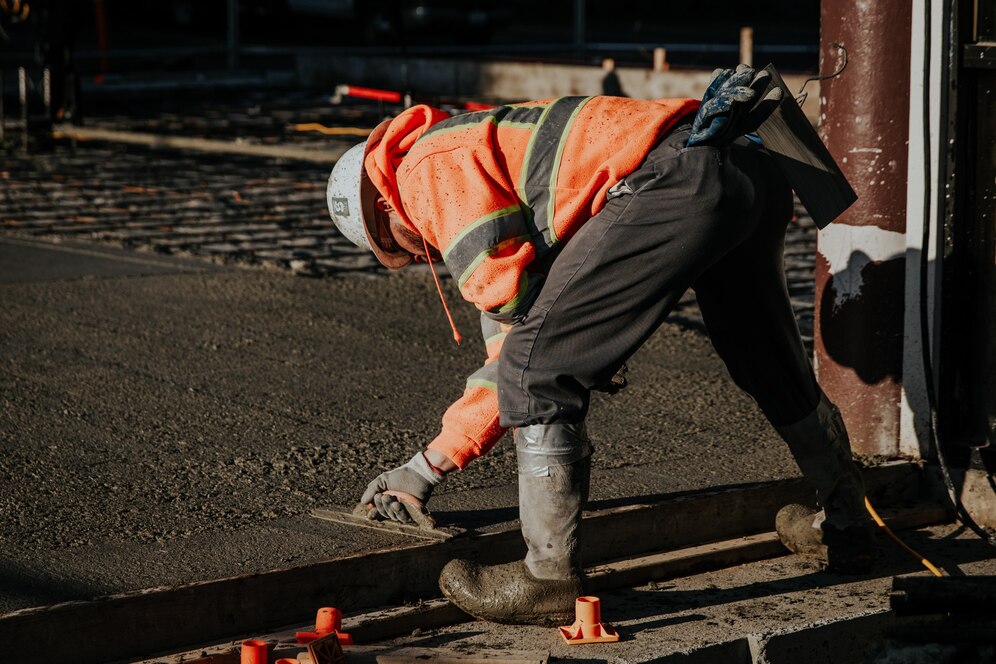

Construction used to be slow, expensive, and problematic. Traditional construction methods often cause delays, wasted materials, and extra costs. But today, modern concrete solutions are changing everything! With advanced materials such as high-performance concrete, self-healing concrete, and even 3D-printed concrete, builders can work faster, save money, and construct stronger buildings. Let’s explore how these modern concrete solutions are improving construction!

High-Performance Concrete (HPC) is a super-strong version of regular concrete. It lasts longer, doesn’t crack easily, and can handle extreme weather. In Canada, where roads and buildings face harsh winters, HPC is a great solution. It helps prevent damage from snow, ice, and heavy vehicles, saving time and money on repairs.
Imagine a concrete road that fixes its own cracks! Self-healing concrete contains tiny bacteria or chemicals that react to water and seal cracks automatically. This is especially useful for bridges and tunnels in Canada, where frequent freeze-thaw cycles cause cracks. Less maintenance means fewer traffic delays and lower costs.
Precast concrete is made in a factory and then delivered to the construction site. This speeds up construction since workers don’t have to wait for concrete to dry on-site. It also improves quality because the concrete is made under controlled conditions. In places like Vancouver and Richmond, where construction deadlines are tight, precast concrete helps projects finish on time.
3D printing isn’t just for small objects—it can build entire homes and offices using concrete! This method is super fast and produces almost no waste. Some 3D-printed buildings can be constructed in just a day! In Canada, this technology could help build affordable housing quickly, especially in remote areas where traditional construction is slow and costly.
UHPC is even stronger than HPC. It includes steel fibres that make it incredibly tough. This type of concrete is used in bridges, earthquake-proof buildings, and even military structures. Because it lasts significantly longer than regular concrete, it reduces long-term repair costs.
Smart concrete has built-in sensors that monitor a structure’s condition. These sensors can detect cracks, pressure, or temperature changes and alert engineers before major problems occur. For example, a smart concrete bridge in Canada could warn engineers about wear and tear before it becomes dangerous. This enhances safety and helps prevent costly structural failures.
Lightweight concrete is just as strong as regular concrete but much easier to transport and install. This makes it ideal for high-rise buildings and prefabricated structures. Since it reduces the overall weight of buildings, it also improves energy efficiency by helping with insulation.
Modern concrete solutions like precast concrete, 3D printing, and rapid-setting concrete significantly speed up construction timelines. These techniques allow buildings, roads, and bridges to be completed in record time, reducing disruptions and increasing efficiency on-site.
By minimizing labour, material waste, and maintenance expenses, modern concrete solutions reduce overall construction costs. Precast and 3D-printed concrete lower the need for on-site work while self-healing and ultra-high-performance concrete reduces long-term repair expenses.
High-performance concrete (HPC), ultra-high-performance concrete (UHPC), and self-healing concrete create structures that are more durable, resistant to weather, and require fewer repairs. These materials extend the lifespan of buildings and infrastructure, making them safer and more reliable.
Innovative construction methods such as 3D printing and precast concrete minimize material wastage by using precise amounts of concrete. This helps in making construction more sustainable and environmentally friendly by reducing landfill waste.
Modern concrete solutions promote sustainable building practices. Many use recycled materials, reduce water consumption, and incorporate carbon-neutral concrete technology that absorbs CO₂ from the atmosphere, helping lower the environmental impact of construction projects.
Advanced concrete materials, including smart concrete with built-in sensors, enhance structural durability and prevent failures. These innovations help engineers monitor and maintain infrastructure effectively, reducing the risk of accidents and costly damages.
Construction is becoming more environmentally friendly, thanks to modern concrete solutions. New materials and techniques are helping Canada build greener structures:
The construction industry is evolving, and modern concrete solutions are leading the way. With innovations like self consolidating concrete, HPC, self-healing concrete, precast elements, and 3D printing, builders can work faster, save money, and reduce their environmental impact. As Canada continues to grow, using innovative materials will ensure that buildings are stronger, efficient, and sustainable.
Need fast, reliable concrete solutions? Contact Speedy Concrete today for high-performance materials tailored to your next project. Build stronger, better, and faster with expert solutions tailored to your needs!